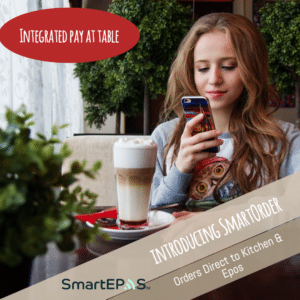The Bottom Line: Costly third-party delivery orders could drop as higher prices hurt consumers’ pocketbooks. But could this be a sign of tightening consumer spending?
Inflation has become a major problem in recent weeks, both for consumers and for restaurants. Higher labor costs, both for restaurant workers and for suppliers, have led to higher prices. Fast-food restaurant prices are up 8% over the past year. At full-service restaurants, they’re up 7.5%. Retail prices are increasing even faster.
So far, at least, there’s been little indication of any real consumer reaction to this. Sales remain relatively strong, though difficult comparisons in the back half of March may make some comparable-store sales weaker.
That may not be the case for third-party delivery. Anecdotal evidence suggests that such orders have slowed this year.
One reason is a normalization in consumer dining habits. Consumers are venturing out a lot more now and are thus not at home to order delivery. That alone could slow that sector’s growth, if not stop it altogether.
But one other, major reason could pull them down: Third-party delivery sales are expensive.
“Inflation is near 10%,” Tom Bailey, senior analyst, consumer foods with Rabobank, said in an interview. “The cost of delivery is 10%. It’s up to 20% additional cost. That is going to leave families reconsidering that option versus driving to pick it up.”
In a recent test by our team of several virtual brands we had a unanimous reaction.The orders cost more than expected. I ordered two items from one of the brands for myself and my Daughter. The total cost after tip was £35. While both items were substantial, that was some serious price shock.
The delivery premium can be substantial. At some brands, it will cost consumers as much as twice as much to order delivery as it does to go and pick it up yourself.
There is nothing necessarily wrong with such premiums. After all, delivery is a service. Consumers who order delivery can be expected to pay the cost of that service.
Maybe more to the point: Restaurants themselves have every incentive to encourage consumers to order from their own mobile apps and websites, rather than from third-party delivery providers. By charging a substantial premium for that service, consumers could turn to the restaurants themselves.
And consumers were clearly willing to pay these prices during the pandemic when they were stuck at home, or afraid to leave the house, but still didn’t want to cook food for themselves or do any dishes. Consumers also had healthy balance sheets thanks to two years’ worth of government stimulus payments.
Now, consumers can leave the house, giving them options. Meanwhile, government stimulus payments are ending. While consumers are making more money thanks to labor shortages, their paychecks are not keeping pace with inflation. That threatens some of their spending power and could lead to cutbacks in the coming months.
All of that means the delivery premium is more of a barrier. If you know that delivery is going to cost a lot more, and you can leave your house to pick the food up yourself or just go out to eat, then maybe you decide to do that instead.
The big question is whether any consumer reaction to that delivery premium could forecast a broader shift away from the high-priced restaurant visits that have marked the past two years—with consumers ordering more premium items and frequenting high-end steak chains and fine-dining concepts.
At the moment, that’s unclear, though we’ve heard from at least some operators who say they’ve noticed a shift toward more value of late. Yet it will take a few weeks or even months to get a full indication of consumer reaction to inflation.
Consumers are paying a lot more money these days for everything from gas to rent to housing to electronics. It’s only fair that, at some point, these higher prices result in an actual reaction that hits restaurants where it hurts.
Delivery could well be the first to show these problems. But that doesn’t mean the service will go away, not by a long shot.




